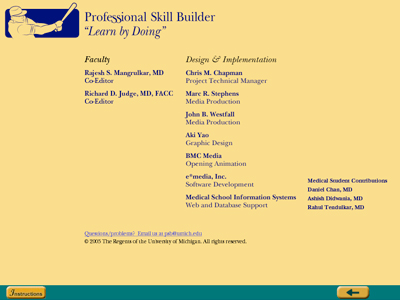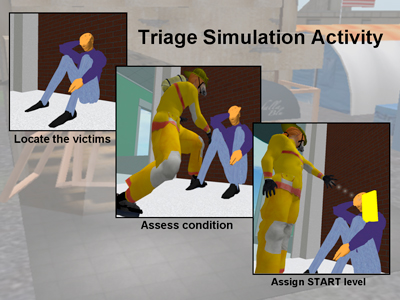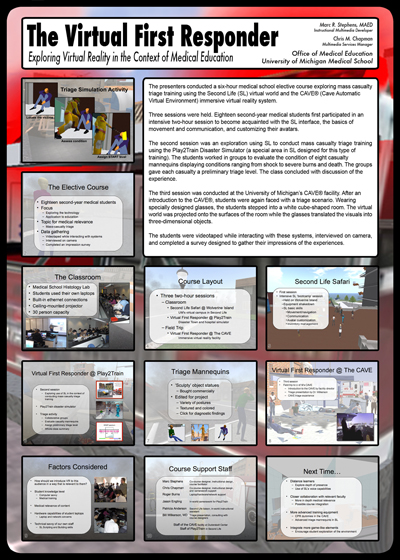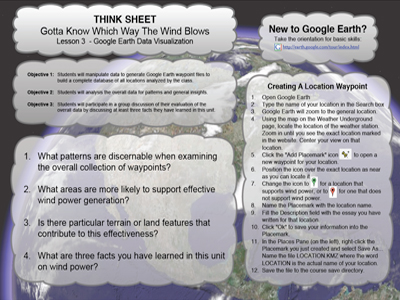Marc works with the Media Development Team at the University of Michigan Medical School as an Instructional Multimedia Developer. Marc is interested in helping knowledge experts deliver instruction to a broader audience than they might normally reach in the normal classroom setting. In most cases this has taken the form of instructional webpages that integrate multimedia, such as audio, video, and other interactive components. His interest in virtual worlds has lead to the collaborative design of a second-year medical school elective exploring the use of the virtual world Second Life as an experiential classroom. |
|||||||||||||||||
|
|||||||||||||||||
The Virtual First Responder - Experiential Learning
Three sessions were held. Eighteen second-year medical students first participated in an intensive 2-hour session to become acquainted with the SL interface, the basics of movement and communication, and customizing their avatars. The second session was an exploration using SL to conduct mass casualty triage training using the Play2Train disaster simulator (a special area in SL designed for this type of training). In the classroom, the students worked in groups to evaluate the condition of eight casualty mannequins displaying conditions ranging from shock to severe burns and death. The groups gave each casualty a preliminary triage level. The class concluded with discussion of the experience. The third session was conducted at the University of Michigan’s CAVE®. After an introduction to the CAVE®, students were again faced with a triage scenario. Wearing specially designed glasses, the students stepped into a white cube-shaped room. The virtual world was projected onto the surfaces of the room while the glasses translated the visuals into three-dimensional objects. The students were videotaped while interacting with these systems, interviewed on camera, and completed a survey designed to gather their impressions of the experiences.
|
|||||||||||||||||
|
|||||||||||||||||
|
|||||||||||||||||



 The VFR was a 6-hour medical school elective course exploring mass casualty triage training using the
The VFR was a 6-hour medical school elective course exploring mass casualty triage training using the 

